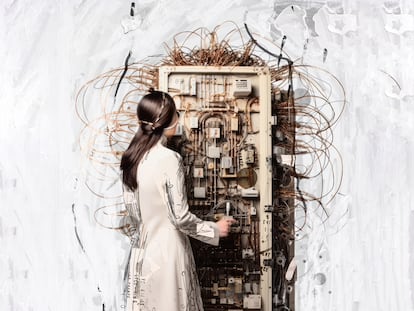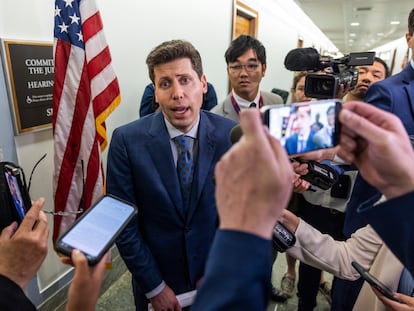How artificial intelligence is creeping into work routines
Astrophysicists, doctors, teachers and creatives explain how they have incorporated AI tools into their day-to-day work
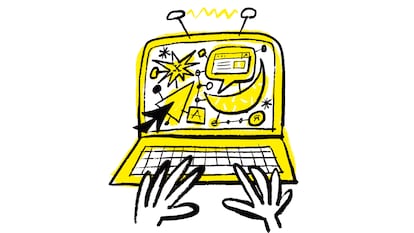
Many people started by dabbling with artificial intelligence (AI) platforms and ended up finding a helper that provides inspiration, solves problems and saves time. Others have been working for years with complex algorithms that are essential to their work. All are professionals in disparate fields who are implementing AI tools in their day-to-day work.
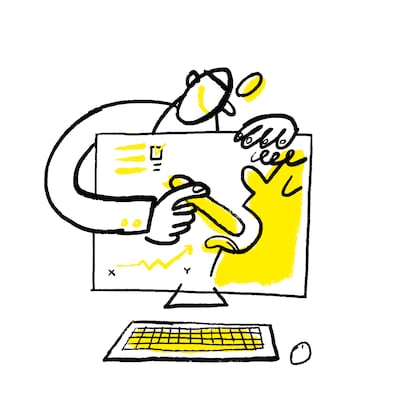
Xavier Pastor, physician
“AI can inform doctors and adjust prescriptions.”
Xavier Pastor is a 66-year-old pediatrician in Barcelona who has always been interested in technological innovation. His first experience with data science dates back to 1984, when he was researching his doctoral thesis on newborns with diabetic mothers. The research required extensive data analysis using the first generation of personal computers at the University of Barcelona, and the physician has been passionate about the convergence of medicine and technology ever since.
In 1996, Pastor was appointed head of medical informatics at the Hospital Clínic de Barcelona, a university hospital that has been investing in AI research since 2017. One of his department’s projects uses machine learning to recommend medication prescriptions. “If the system identifies a better medication, it can inform the doctor and adjust that prescription.”
The hospital uses AI in multiple projects to create virtual models from a patient’s tumor biomarkers to predict cancer risks, as well as early detection of colorectal cancer with deep learning algorithms and AI-enhanced radiology readings to detect brain and lung diseases.
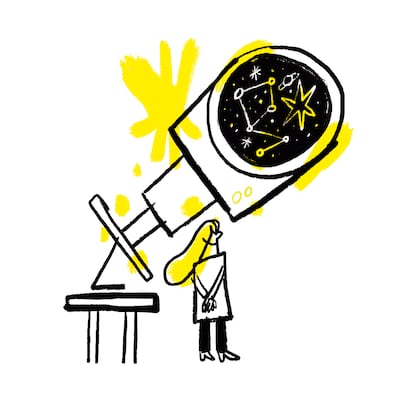
Belén Yu Irureta-Goyena, astrophysicist
“It can do what a person can do and more.”
Traditional algorithms “fall short” for the work Belén Yu Irureta-Goyena does. She’s a 24-year-old astrophysicist from Madrid pursuing a PhD at the Swiss Federal Institute of Technology (Lausanne, Switzerland) who tracks asteroids, space debris and satellites using astronomical imaging.
“I use AI algorithms for a task that used to be done by a person looking at hundreds of images with the naked eye,” she said. Today’s large telescopes can quickly capture tens of thousands of images, so a manual analysis has become unmanageable — computerized methods are essential.
The scientist uses specific AI algorithms to identify correlations between data that would not be obvious to a person. “The algorithm can do what a person can do and more.” She believes artificial intelligence can make significant contributions to every scientific field, and that automated processes are indispensable today. “AI has facilitated these methods and exceeds the capabilities of traditional algorithms in many processes.”
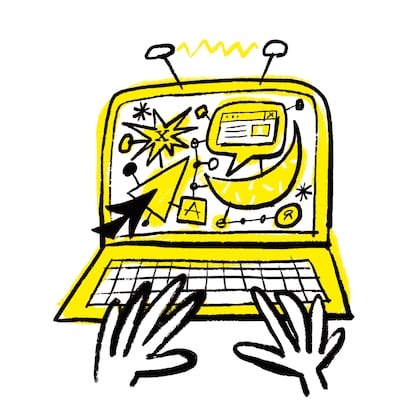
Juan Hernández, institutional relations consultant
“ChatGPT can’t attend a meeting for me.”
Juan Hernandez is a 29-year-old from Argentina who has been using ChatGPT for six months in his work as a consultant for an international financial institution. Like others, he first tried it out of curiosity and soon realized it could be useful in his work. “I was very late with some work products once and didn’t have a team to help me. ‘Well, let’s go for it,’ I told myself.” The first time he used ChatGPT at work, he asked it to generate titles for a research paper and got 20 suggestions back.
Then he used it more extensively. “I can’t use AI to generate the final draft of a paper I would hand my boss, but it can provide a good starting point.” His primary AI tool is ChatGPT because he finds it the easiest to use. Hernández queries ChatGPT for initial research ideas, organizing meetings and presentations, producing multiple options for indecisive clients, and translating and proofreading texts.
Day-to-day tasks have become easier for Hernández. “Thinking of 20 titles for a document takes time, and these tools can almost instantly produce options to choose from or provide inspiration.” Hernández isn’t worried that AI is going to put him out of a job. “ChatGPT doesn’t have a face and can’t attend a meeting for me.”
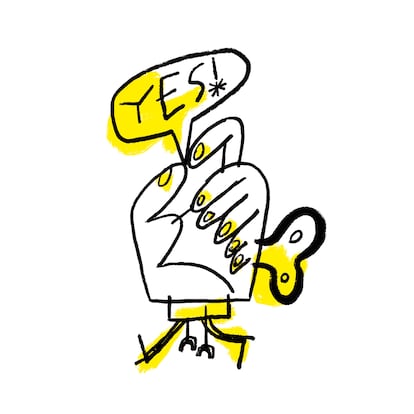
Raphaël Lozano, graphic designer
“It’s a controversial topic in the design world.”
When Raphaël Lozano, a 27-year-old graphic designer from France, started seeing all the reports about ChatGPT, he became interested in trying generative AI to see how it worked. But now it has become a constant companion in his work as a graphic designer for Founderholics GmbH, a food supplement company in Germany.
“My life and work haven’t changed, but AI has modified the way I do things,” he said. AI tools have replaced some free websites and design programs he once used. It’s most helpful with the basics when he’s starting a new project. Lozano mostly uses ChatGPT, Dall-E and Leonardo AI. ChatGPT makes it easier for him to write narratives and define character personas for projects. He uses image-generating AI tools like Dall-E to provide inspiration, finalize images, create montages, enlarge photos and generate new ones.
Lozano is the company’s sole graphic designer, but every day he sees more and more colleagues using ChatGPT for routine tasks like writing emails and newsletters. “It’s a controversial topic in the design world. Some people are totally against using AI programs because of issues like the unauthorized use of other people’s images.”
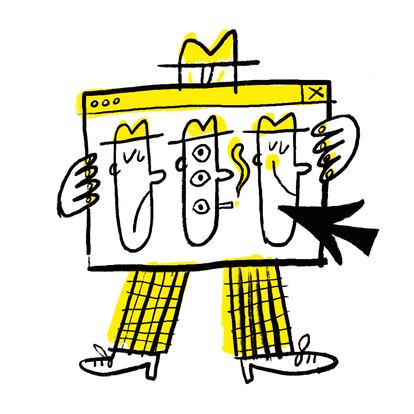
Marvin del Cid, photographer and audiovisual producer
“I don’t think it makes us less creative. It makes us more efficient.”
Marvin del Cid is a 49-year-old photographer, video producer and journalist from Guatemala who uses AI in every part of his work. He lives in the Dominican Republic and works as a freelancer for companies and media outlets such as Diario Libre, mostly on environmental topics. He uses AI platforms to correct and rewrite text, generate subtitles and even to get ideas for new projects. “When I’m not satisfied with what I’m writing, I use ChatGPT to shape the text. For example, it can give me suggestions for alternative approaches,” he said.
Del Cid uses other platforms like Gigapixel to improve image quality when he only has low-resolution material available and to enhance old analog photos. “AI has made me more efficient by reducing the time to do many tasks. Subtitling videos now takes two days less time, and I can enhance voice quality in a podcast without having to go to a studio.”
Eventually, most people in his line of work will incorporate AI into their processes to remain competitive, says del Cid. “I don’t think it makes us less creative. It makes us more efficient.” While he appreciates the usefulness of AI, del Cid believes there are ethical nuances to consider. “A documentary photograph can be improved but should never be modified.” Using editing tools like Topaz Labs, an old image can be fully restored.
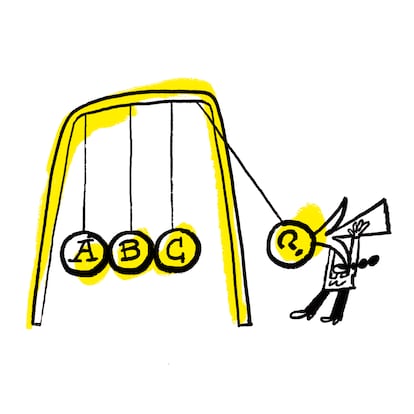
Alexandra Daniel, English teacher
“The kids will learn to use it like I did.”
Alexandra Daniel didn’t know much about artificial intelligence until she started seeing stories about it everywhere. The 35-year-old teacher from Venezuela has lived for almost a decade in Buenos Aires and works as a private English tutor for children and teenagers. “When everyone suddenly started talking about the famous ChatGPT, I got very curious. At first, it’s intimidating to see how it responds to everything in great detail. I decided to learn how to use it well and realized it could help me with my work.”
Daniel uses the tool for proofreading, creating homework assignments and summarizing topics for her students. She also believes it’s important to stay current with technological advances and keep pace with the young people she teaches. Daniel wants her students to see AI as a useful tool and not as a shortcut for doing homework. “Saying it’s bad and forbidding its use doesn’t make sense. They will learn to use it like I did.”
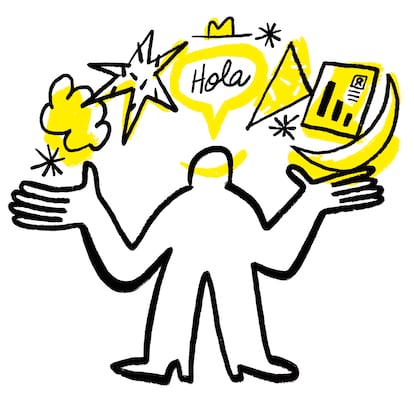
Goran Stipcich, data scientist
“Everyone is talking about ChatGPT, but AI is much more than that.”
Goran Stipcich has been fully immersed in the world of artificial intelligence for six years. The 42-year-old Croatian engineer with a PhD in applied mathematics heads the data science team at Wunderman Thompson, a multinational marketing firm. AI is “a vast world,” said Stipcich, and indispensable for his work. “It’s used in everything from analyzing data to measurement.”
Stipcich uses it to produce more personalized marketing content, such as tailored internet ads based on individual user profiles. He applies AI algorithms to analyze cookie data (small blocks of data about a user created when browsing a website) and generates profiles for companies so their advertising is more relevant and targeted to individual customers. Stipcich is careful to clarify that they use anonymized data “without tracking or identifying any individual… AI covers many areas. Everyone is talking about ChatGPT, but AI is much more than that,” he said.

Azucena Vázquez, teacher training consultant
“It saves me hours of time every day.”
Asociación Espiral, Educación y Tecnología is a non-governmental organization (NGO) in Barcelona that trains college and high school teachers in how to use technology and digital innovation — including artificial intelligence — in the classroom. The NGO’s vice president, Azucena Vázquez, is a teacher who says AI tools save her hours of time every day with her administrative tasks.
Vázquez creates educational plans and content related to digitization for teachers. “I use it [AI] to design educational materials for teachers… It’s useful because I can work on new things with the time saved on routine tasks.” For example, it saves her a lot of time producing subtitles for video tutorials: “All I have to do is review the video with the proposed subtitles, decide whether they’re okay, and edit them on the fly.” Vázquez says she always keeps up with technological advances and their potential use in the classroom.
Sign up for our weekly newsletter to get more English-language news coverage from EL PAÍS USA Edition
Tu suscripción se está usando en otro dispositivo
¿Quieres añadir otro usuario a tu suscripción?
Si continúas leyendo en este dispositivo, no se podrá leer en el otro.
FlechaTu suscripción se está usando en otro dispositivo y solo puedes acceder a EL PAÍS desde un dispositivo a la vez.
Si quieres compartir tu cuenta, cambia tu suscripción a la modalidad Premium, así podrás añadir otro usuario. Cada uno accederá con su propia cuenta de email, lo que os permitirá personalizar vuestra experiencia en EL PAÍS.
En el caso de no saber quién está usando tu cuenta, te recomendamos cambiar tu contraseña aquí.
Si decides continuar compartiendo tu cuenta, este mensaje se mostrará en tu dispositivo y en el de la otra persona que está usando tu cuenta de forma indefinida, afectando a tu experiencia de lectura. Puedes consultar aquí los términos y condiciones de la suscripción digital.

